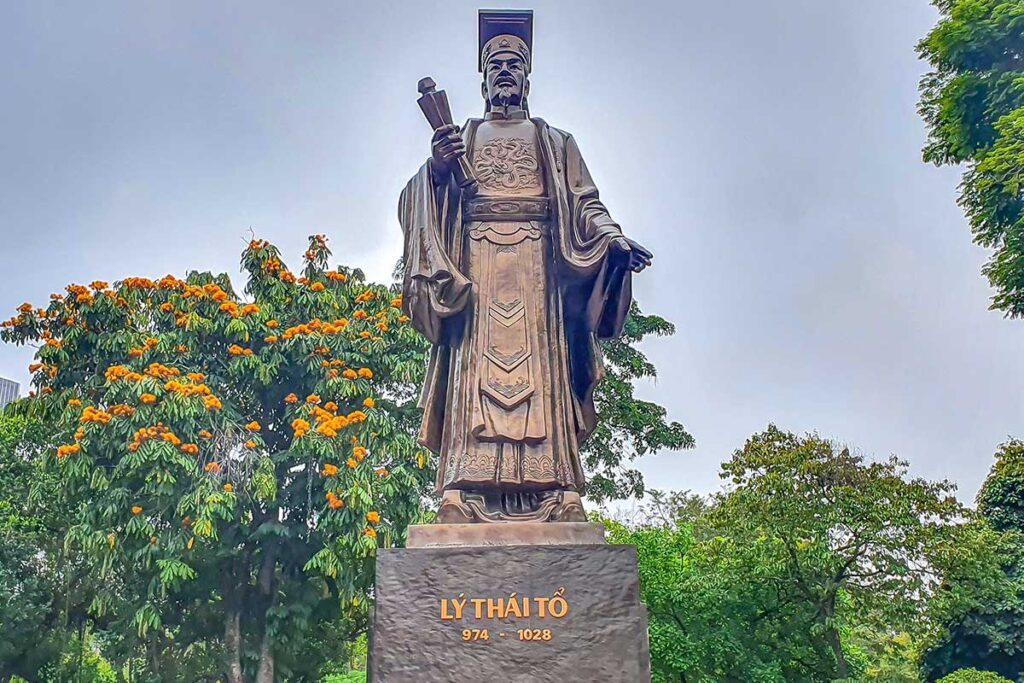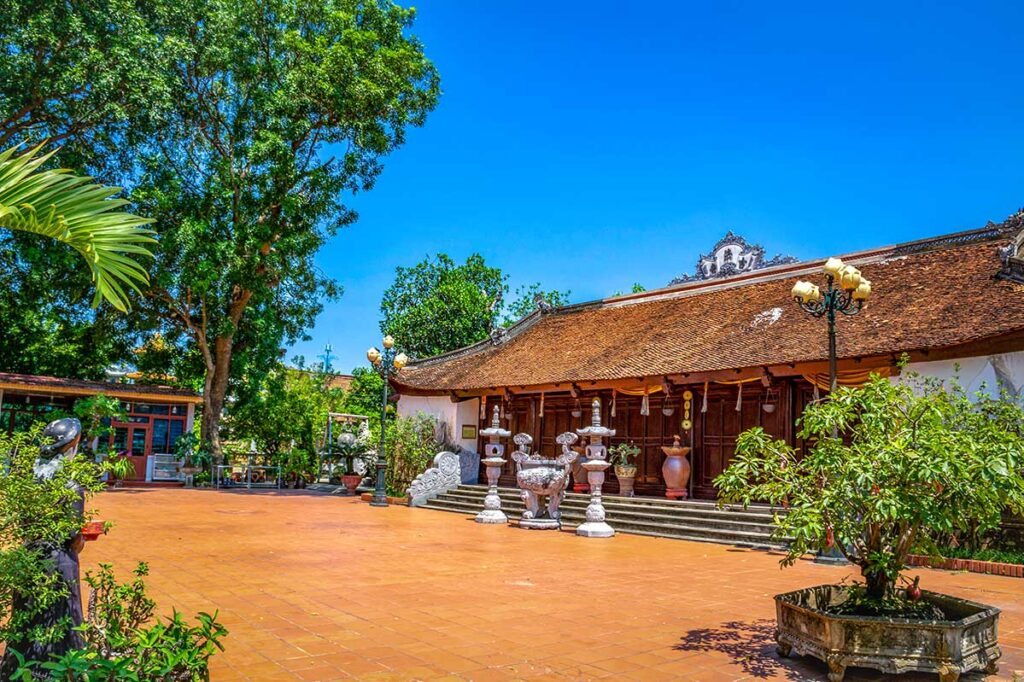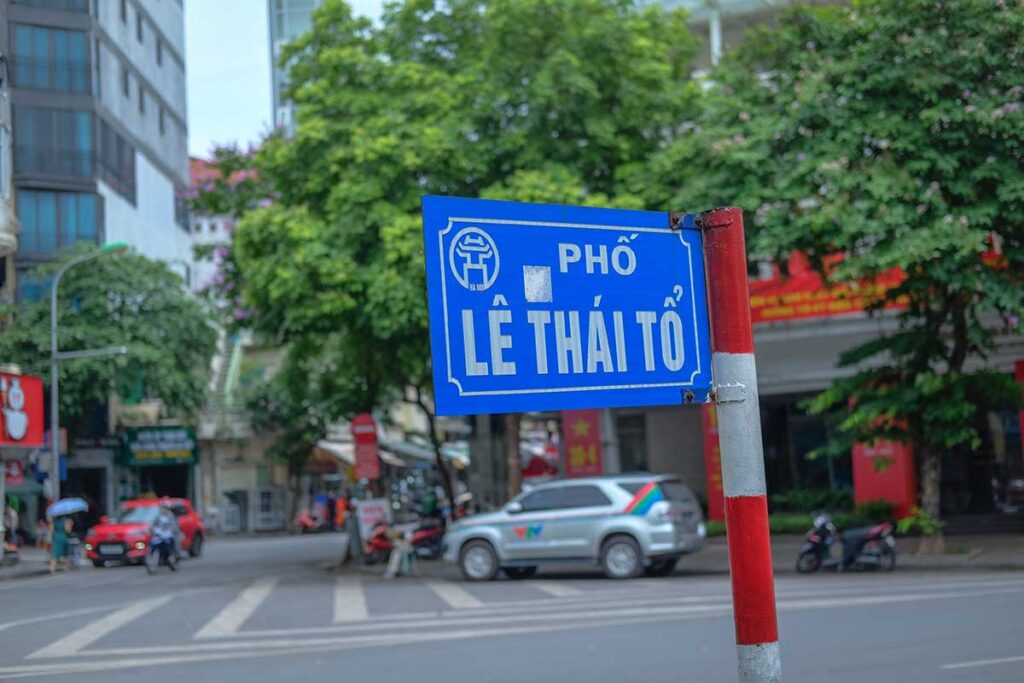Who was Ly Thai To?
Ly Thai To, born as Ly Cong Uan in 974, began his life as an orphan and was raised by Buddhist monks. Known for his intelligence and leadership, he rose through the ranks of the royal court and was chosen as emperor in 1009. As the first ruler of the Ly Dynasty, he famously moved the capital from Hoa Lu to Thang Long—modern-day Hanoi—marking a major turning point in Vietnamese history.
He is remembered for founding Hanoi, unifying the country, and laying the groundwork for nearly two centuries of Ly Dynasty rule. Ly Thai To promoted Buddhism, reformed the government, and brought lasting stability after years of unrest. Today, he is honored as a wise and visionary leader whose legacy still shapes Vietnam’s identity.
Life and Legacy – Key events in Ly Thai To’s life
Early life and Buddhist upbringing (974–1009)
Ly Cong Uan was born in 974 in what is now Bac Ninh Province. Orphaned at a young age, he was taken in and raised by Buddhist monks at a pagoda, where he studied religious texts and developed a reputation for wisdom and discipline.
As he grew older, his talents caught the attention of officials in the royal court. He left monastic life to serve under the Later Le Dynasty, where he steadily rose through the ranks as a military commander and civil administrator, earning widespread respect for his intelligence and moral character.
Becoming Emperor – Founding the Ly Dynasty (1009)
In 1009, political unrest followed the death of the last Le king, who died without an heir. Court officials and Buddhist leaders supported Ly Cong Uan as a unifying figure, and he was peacefully chosen to become the new emperor.
He took the throne under the name Ly Thai To, officially founding the Ly Dynasty. His rise marked the end of decades of instability and the beginning of a new era for Vietnam.
Moving the Capital to Thang Long (1010)
Soon after becoming emperor, Ly Thai To issued the Edict on the Transfer of the Capital, explaining the need to move the political center to a more strategic and prosperous location. While visiting the Red River region, he reportedly saw a golden dragon rise into the sky—an omen that inspired the name Thang Long, meaning “Rising Dragon.”
The relocation from Hoa Lu to Thang Long (modern-day Hanoi) was a turning point in Vietnamese history. The new capital offered better access to trade, defense, and agriculture, and would remain the heart of the nation for centuries to come.
Reforms and Rule (1010–1028)
Ly Thai To focused on consolidating power and creating a more organized and stable government. He reduced corruption, improved the legal system, and promoted merit-based appointments in the court.
A devout Buddhist, he supported the construction of temples and the spread of Buddhism throughout the country. His reign brought peace, prosperity, and a cultural flourishing that helped define Vietnam’s early identity.
Death and Succession (1028)
Ly Thai To died in 1028 after nearly two decades on the throne. His son, Ly Thai Tong, succeeded him and continued many of his father’s policies.
The Ly Dynasty would go on to rule for more than 200 years, with Ly Thai To remembered as its visionary founder. His decision to move the capital and build a strong, centralized state left a lasting legacy on Vietnamese history.
Ly Thai To in Vietnam today
Ly Thai To may have lived over a thousand years ago, but his legacy remains visible in statues, museums, temples, and the very name of Hanoi itself. Here’s where you can still encounter his influence while traveling in Vietnam.
Ly Thai To Statue in Hanoi

One of the most visible tributes to Ly Thai To is the large bronze statue located near Hoan Kiem Lake in central Hanoi. The statue stands in a small park often used for cultural events, photography, and evening strolls. It was built in 2004 to celebrate Hanoi’s 1,000-year anniversary, marking the city’s founding by Ly Thai To in 1010.
Mention in museums and historical sites
Although no museum is solely dedicated to Ly Thai To, several major institutions include exhibits about his life and legacy:
- The Vietnam National Museum of History in Hanoi displays artifacts from the Ly Dynasty, including items related to the capital’s move to Thang Long.
- The Hanoi Museum includes displays from Hanoi’s founding and development, with references to Ly Thai To’s role.
- At the Imperial Citadel of Thang Long, you’ll find interpretive panels and relics connected to the city’s earliest years under Ly rule.
These places offer helpful context for understanding his role in shaping Vietnamese civilization.
Ly Dynasty Temples and Pagodas

A key site is the Ly Bat De Temple, more commonly known as Do Temple, in Dinh Bang Village, Bac Ninh—considered the spiritual homeland of the Ly Dynasty. This temple honors the first eight Ly emperors, with Ly Thai To as its central figure. The temple is not only a place of worship but also an important stop for those interested in Vietnam’s early dynastic history.
Additionally, some pagodas in Bac Ninh and Hoa Lu (Ninh Binh) feature smaller altars and shrines that pay tribute to Ly Thai To, especially in connection with his Buddhist background.
Streets and schools named after him

Ly Thai To’s name appears throughout Vietnam on streets, schools, and public spaces. Almost every major city has a street named “Ly Thai To,” including Hanoi, Da Nang, and Ho Chi Minh City. These namings reflect his lasting status as a respected national figure.
Mention on Vietnamese Currency (Historic)
Ly Thai To appeared on commemorative Vietnamese banknotes issued around 2005, ahead of the 1,000th anniversary of Hanoi. Although these notes are no longer in circulation, they can still be found in museums, souvenir shops, and among collectors of Vietnamese currency.
Edict on the transfer of the Capital
The famous Edict on the Transfer of the Capital, which explained his decision to move the capital to Thang Long, is preserved in historical texts and museum displays. A stone version and interpretation of the edict can be seen in Ly Thai To Park, near his statue in Hanoi, making it a meaningful stop for history-minded travelers.
Ly Dynasty Temples and Pagodas
Temples and pagodas honoring Ly Thai To and the Ly Dynasty can be found in several provinces. In Bac Ninh—his birthplace—there are smaller temples dedicated to the Ly lineage. In Ninh Binh, the ancient capital of Hoa Lu has historical sites connected to the transition between the Le and Ly Dynasties.
Festivals and Cultural Programs
During milestone anniversaries, especially those related to Hanoi’s founding, cultural programs, parades, and exhibitions often include tributes to Ly Thai To. Some Buddhist festivals also commemorate him as a protector of the faith and a ruler who supported the spread of Buddhism across the country.
Other legendary figures in Vietnamese history
Ly Thai To was a transformative figure in Vietnam’s past, but he stands among many other national heroes. Here are a few more who helped shape the country’s identity:
- Ngo Quyen – Defeated the Chinese at the Battle of Bach Dang River in 938 and declared Vietnam’s independence, centuries before Ly Thai To’s rule.
- The Trung Sisters – Courageous military leaders who led a rebellion against Chinese domination in the first century AD. They remain symbols of resistance and national pride.
- Tran Hung Dao – Military strategist who led Vietnam to major victories against Mongol invasions in the 13th century.
- Ho Chi Minh – Leader of Vietnam’s modern independence movement and founder of the current state.
- General Vo Nguyen Giap – Commander behind key victories during the First Indochina War and the Vietnam War.
➤ Explore more in our full guide: Famous Vietnamese People



